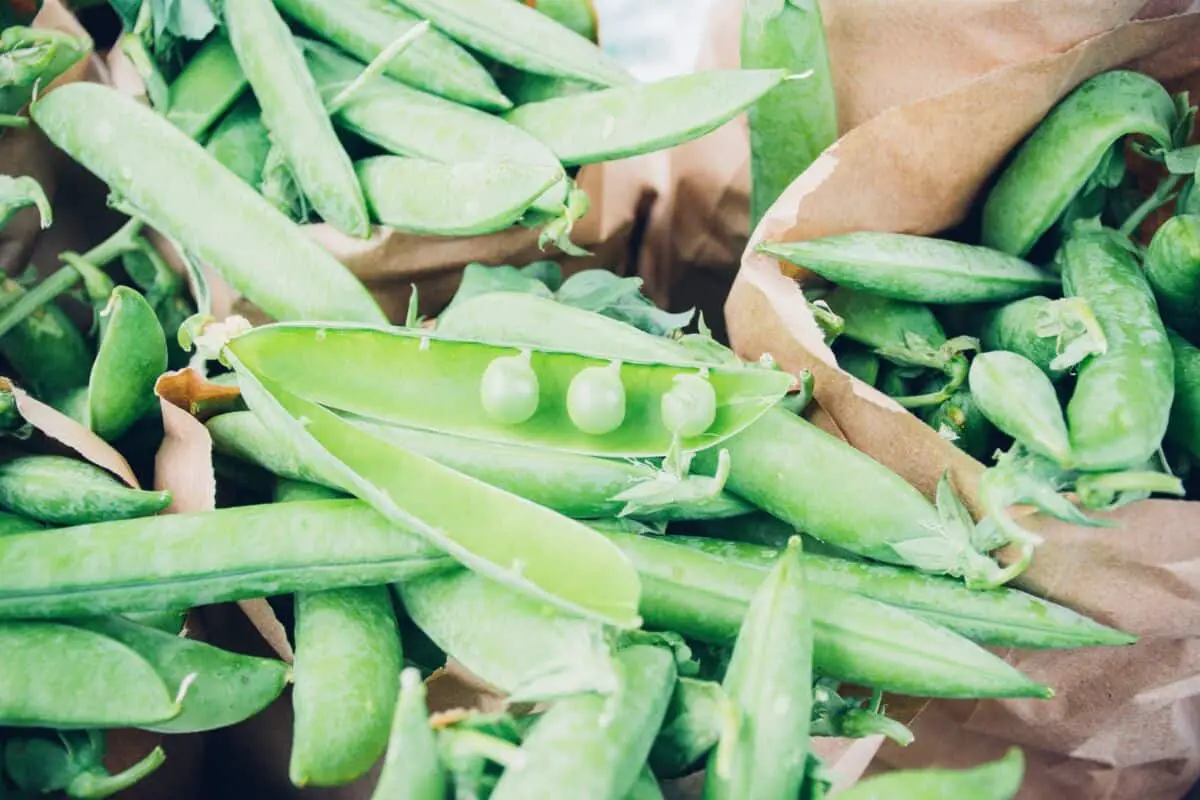Balcony gardening is a great way to bring plants into a small living space. Sweet peas are a good choice for balcony gardens, because they are easy to tend and lightweight. They produce colorful blossoms with a sweet fragrance, and can be found either in a dwarf variety or in traditional varieties, which grow six to eight feet high.
To grow sweet peas on a balcony, first decide which variety you’d like to plant. Then choose a lightweight, light-colored planter of the appropriate size and fill it with a rich, compost-treated soil. Then, soak your seeds in water for 24 hours before planting. Create pencil holes in the soil and drop your seeds in, then water regularly.
As your sweet peas grow, it’s important to tend them properly, and pick the blossoms often if you’d like more blossoms to grow. Make sure not to eat the peas, as they are toxic to humans and animals.
Why Grow Sweet Peas?
Sweet peas make wonderful garden flowers. These annuals grow clusters of blossoms with a strong, sweet fragrance, and come in varieties in almost every color but yellow. Most commonly, the flowers are red, pink, blue, white, or lavender, and have a delicate, winged appearance.
Sweet peas can be planted in a pot or in the ground, making them great plants for your deck, patio, balcony, or backyard. These plants usually climb as they grow and are known for their beautiful addition to a trellis or fence. An exception is the bush variety of sweet peas, which also grows beautiful blossoms.
Some varieties of sweet peas are dwarf or patio-sized and are a great choice for a small balcony. However, traditional sweet peas can also grow nicely in a small space, provided they are planted in a deep enough pot or planter. Some of these traditional varieties grow as tall as six to eight feet high, which is important to consider when planning your balcony garden.
It’s important to note that sweet peas are not an edible plant, as the peas themselves are toxic to humans and pets. If you’re looking for an edible pea plant, try the Oregon Sugar Pod instead.
Balcony Gardening Basics
Balcony gardening is similar to traditional gardening but requires a few special considerations. This is important both for the health of your plants and for the safety and comfort of your balcony space.
- If your balcony is on a high floor of the building, you’ll want to make sure that the plants you choose can withstand gusts of wind.
- For any balcony garden, it’s important to choose lightweight containers for your plants. Poly-resin containers are preferable to stone or pottery planters because too much weight can cause damage to your balcony and be a safety hazard.
- Next, recognize that a balcony means shifting shadows, sometimes giving your plants full sunlight, and sometimes keeping them completely in the shade. Make sure that whatever plants you choose can withstand these conditions.
- Finally, you need to check the rules of your apartment building or condo, because some landlords prohibit tenants from having balcony gardens.
Sweet Peas as Balcony Plants
Sweet peas are best planted in full sun and are rooted in cool soil. You can provide a cooler soil environment by choosing light-colored planters that capture less of the sun’s heat.
Be sure that you have enough space for fully grown sweet pea plants. Traditional varieties require soil at a depth of two feet and can grow six to eight feet high. Dwarf varieties can grow well in a low trough less than a foot high and stay low to the ground, and so don’t require the same height considerations.
The Planting Process
- Make sure you have the right kind of planter. If you’re growing a large, traditional plant, use a two-foot deep planter; if you’re growing the dwarf variety, use a low trough instead. In either case, you should use a lightweight, poly-resin container in a light color.
- Soak the seeds in water for 24 hours, then gently nick them with a nail file. This will speed up the sprouting process, and is especially important if you do not live in a temperate climate.
- Buy fresh soil and compost. Fresh soil will decrease the chance that a fungal infection will spread, and compost will ensure that your plant has the nutrients that it needs. Compost can be bought at a hardware store or gardening center, or you can make it at home.
- Make sure your planter has a good drainage system. This can either be an hole or holes in the bottom of the planter, or a layer of rocks in the bottom of your planter, or both.
- Fill your planter with your soil and compost mixture.
- Create narrow holes in the soil with a pencil. These should also be about the depth of a full-sized pencil.
- Drop the seeds in, one in each hole. This will prevent overcrowding as the plants begin to grow.
- Bury the seeds, pressing the soil firmly in place. This will shut out any light, which is important to seed germination and growth.
When to Plant Sweet Peas
When to plant sweet peas depends on the kind of climate you live in. If you live in a very cold climate, it’s best to plant the seeds in very late winter or even early spring. If your area is extremely cold, you may even consider starting your plants indoors, at least for their first week.
In warmer areas, you can plant your sweet peas in the late fall, and expect blossoms through the late winter and early spring.
Either way, it’s important to note that sweet peas do not do well in temperatures above 65 degrees Fahrenheit.
What Growing Supports Should I Use?
Growing supports come in many shapes and forms and can either be decorative additions to your garden or simple structures that serve to highlight the plant itself. Some options include trellises, tripods, wire, fencing, and walls, or creative homemade solutions.
Trellises, tripods, and cages can all be bought at a gardening center, and provide a good amount of support for your sweet pea plants.
- Flat trellises. They can be made from wood, metal, and plastic, and are sometimes considered to be a kind of floral privacy screen. These can also be made from vinyl, like the 7.5ft. Grande Trellis.
- Tripods. They have a three-dimensional look and have a strong presence in the garden. They are very sturdy, but not always tall enough for a plant like the sweet pea. However, you can find tripods that reach at least 6ft. tall, like the Collections, Etc. model.
- Fences and walls. Both provide enough support for a lightweight plant and can be very beautiful draped in flowers. However, this option makes your plants less portable, which can be a problem if you intend to bring them in for winter. Walls are also not always able to provide enough grip for plants and may require a flat, wall-mounted trellis.
There are many kinds of support available for lightweight plants like the sweet pea, including several homemade options. Watch the video below, and feel free to get creative:
Tending to Sweet Pea Plants
After you plant your sweet pea seeds, you’ll likely start to see growth after one to two weeks. Once the seedlings are visible, make sure the stems are firmly supported with soil, gently pressing soil into small mounds at the base of the stem.
Make sure to keep the soil moist, testing the moisture by inserting your finger into the pot up to the first joint. If it feels dry, add more water.
If you did not use compost when planting, consider adding fertilizer to the soil once the seedlings are visible. This should be a potash fertilizer, which is high in potassium, rather than a nitrogen fertilizer.
Once the plants start growing taller, you’ll want to make sure that the soil is covered with mulch or compost to keep it cool and moist.
If you want to encourage the growth of flowers rather than seeds, pick the flowers often. This will encourage the plant to put more of its energy into creating more flowers.
Pests and Diseases
Fungal infections caused by overwatering is a common threat to sweet pea plants, and can be mitigated with careful watering, good drainage, and air circulation. Avoid packing your soil too tightly, and use fresh soil and a clean pot for new plants whenever possible. If you do notice a fungal infection, use a fungicide that will not cause burning, like the Bonide Copper Fungicide.
The following are the most common fungal infections in sweet peas:
- Pythium root rot
- Mildew, a fuzzy white mold
- Gray mold, a fuzzy white mold
- Rust, an orange mold that appears on leaves
Slugs and snails can also cause problems for sweet peas by eating through the plants, especially during rainy seasons. They can be difficult to spot, but you can recognize an infestation by the slimy secretions that they leave behind.
Slugs and snails can be handled with a number of home remedies. Laying pieces of cardboard on your plants and then flipping them over in the morning is a good way to reveal the pests, and then they can be frozen and added to compost. They can also be dealt with shallow dishes of beer, or a mixture of water, molasses, cornmeal, and flour.
Conclusion
Sweet pea plants are a great choice for a balcony garden. These plants do best in a temperate environment but can adapt to colder or hotter environments if you take them indoors during extreme conditions. Generally, they are easy to tend, lightweight, and have beautiful vines that can fill a trellis or cover a fence with colorful blossoms.

